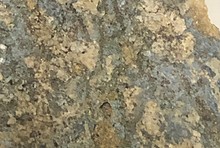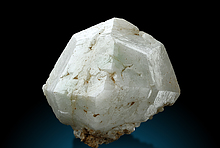Home PageAbout MindatThe Mindat ManualHistory of MindatCopyright StatusWho We AreContact UsAdvertise on Mindat
Donate to MindatCorporate SponsorshipSponsor a PageSponsored PagesMindat AdvertisersAdvertise on Mindat
Learning CenterWhat is a mineral?The most common minerals on earthInformation for EducatorsMindat ArticlesThe ElementsThe Rock H. Currier Digital LibraryGeologic Time
Minerals by PropertiesMinerals by ChemistryAdvanced Locality SearchRandom MineralRandom LocalitySearch by minIDLocalities Near MeSearch ArticlesSearch GlossaryMore Search Options
The Mindat ManualAdd a New PhotoRate PhotosLocality Edit ReportCoordinate Completion ReportAdd Glossary Item
Mining CompaniesStatisticsUsersMineral MuseumsClubs & OrganizationsMineral Shows & EventsThe Mindat DirectoryDevice SettingsThe Mineral Quiz
Photo SearchPhoto GalleriesSearch by ColorNew Photos TodayNew Photos YesterdayMembers' Photo GalleriesPast Photo of the Day GalleryPhotography
╳Discussions
💬 Home🔎 Search📅 LatestGroups
EducationOpen discussion area.Fakes & FraudsOpen discussion area.Field CollectingOpen discussion area.FossilsOpen discussion area.Gems and GemologyOpen discussion area.GeneralOpen discussion area.How to ContributeOpen discussion area.Identity HelpOpen discussion area.Improving Mindat.orgOpen discussion area.LocalitiesOpen discussion area.Lost and Stolen SpecimensOpen discussion area.MarketplaceOpen discussion area.MeteoritesOpen discussion area.Mindat ProductsOpen discussion area.Mineral ExchangesOpen discussion area.Mineral PhotographyOpen discussion area.Mineral ShowsOpen discussion area.Mineralogical ClassificationOpen discussion area.Mineralogy CourseOpen discussion area.MineralsOpen discussion area.Minerals and MuseumsOpen discussion area.PhotosOpen discussion area.Techniques for CollectorsOpen discussion area.The Rock H. Currier Digital LibraryOpen discussion area.UV MineralsOpen discussion area.Recent Images in Discussions
Techniques for CollectorsPyrognomity of minerals

9th Nov 2013 15:46 UTCJyrki Autio Expert
Wikipedia mentions allanite and gadolinite being pyrognomic.
In what temperature the phenomenon would be expected?
Are there more minerals with this property?
Jyrki

9th Nov 2013 16:10 UTCAlfredo Petrov Manager

9th Nov 2013 17:53 UTCJyrki Autio Expert
Do I have to heat the sample glowing red first or should it happen before the normal glow?
And after this kind of annealing, what kind of results would be expected in XRD of (formerly) metamict mineral?
9th Nov 2013 18:39 UTCUwe Kolitsch Manager
You may get a single-phase crystalline product of annealing or a mixture of crystalline phases.
It all depends on the conditions of annealing (max. T, annealing time, heating and cooling rate, atmosphere).
Often you can't deduce what the original mineral was.
9th Nov 2013 19:08 UTCRoger Curry
Please do a video, I'd like to see this.
Regards,
Rog
10th Nov 2013 01:38 UTCDean Allum Expert
The term is not in the Mindat glossary.
Alfredo and Uwe, do you have any modern references to this effect? Have you ever seen it exhibited in person? What are the temperature ranges which you expect it to occur? Is it exothermic?
-Dean Allum
10th Nov 2013 02:01 UTCReiner Mielke Expert

10th Nov 2013 02:14 UTCAlfredo Petrov Manager
It would have to be exothermic, because the mineral is releasing the indirectly stored up energy of the radioactive decay. After it's gone, it's over, and you'd have to wait millions of years for a "recharge", so a pyrognomic mineral would be expected to show the phenomenon only once.
The ordinary thermoluminescence of some minerals (e.g.: fluorite, diamonds) can also be related to the release of energy stored by radioactive decay (but not always from that cause - it can also be release of energy stored from ultraviolet exposure or cosmic rays), but that's a phenomenon in crystalline materials, and is gradual, not the more sudden release of energy that occurs when metamict minerals are heat annealed.

11th Nov 2013 06:51 UTCAlfredo Petrov Manager
"... some varieties glow intensely for a moment (thermoluminescent), although only one time. Fluorescent frequently enough for this to be a good test."
Pough is obviously talking about the pyrognomic property, although he seems not to distinguish this from ordinary thermoluminescence.
Anyway, Jyrki, back to your original question of which other pyrognomic species could be added to your list of gadolinite and allanite: certainly zircon, of course, and probably (although I haven't tried them myself) any other metamict mineral that is not completely opaque, like thorite, ekanite, Th-bearing titanites, formanite?..... But only from geologically ancient deposits, younger material may not be metamict yet.

17th Nov 2013 04:28 UTCHenry Barwood
17th Nov 2013 16:51 UTCRob Woodside 🌟 Manager




Mindat.org is an outreach project of the Hudson Institute of Mineralogy, a 501(c)(3) not-for-profit organization.
Copyright © mindat.org and the Hudson Institute of Mineralogy 1993-2024, except where stated. Most political location boundaries are © OpenStreetMap contributors. Mindat.org relies on the contributions of thousands of members and supporters. Founded in 2000 by Jolyon Ralph.
Privacy Policy - Terms & Conditions - Contact Us / DMCA issues - Report a bug/vulnerability Current server date and time: April 23, 2024 08:38:04
Copyright © mindat.org and the Hudson Institute of Mineralogy 1993-2024, except where stated. Most political location boundaries are © OpenStreetMap contributors. Mindat.org relies on the contributions of thousands of members and supporters. Founded in 2000 by Jolyon Ralph.
Privacy Policy - Terms & Conditions - Contact Us / DMCA issues - Report a bug/vulnerability Current server date and time: April 23, 2024 08:38:04











